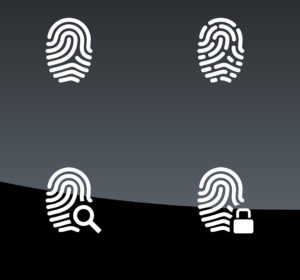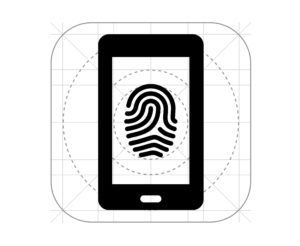Controversy In The Classroom
 Few debates over biometrics get as heated as those that happen in the realm of education, and for good reason: children are the future after all, and they are the one of the only demographics that relies on other people to make consensual decisions on their behalf, which places a lot of pressure on the parents and guardians. In other words, the stakes are high for the voices in the controversy over biometrics in schools, and therefore fear can become a major motivating factor, overriding a sense of advancement, efficiency, and in the end a better educational atmosphere for kids in the name of general privacy protection.
Few debates over biometrics get as heated as those that happen in the realm of education, and for good reason: children are the future after all, and they are the one of the only demographics that relies on other people to make consensual decisions on their behalf, which places a lot of pressure on the parents and guardians. In other words, the stakes are high for the voices in the controversy over biometrics in schools, and therefore fear can become a major motivating factor, overriding a sense of advancement, efficiency, and in the end a better educational atmosphere for kids in the name of general privacy protection.
The most high profile example of this conflict, generally characterized by schools and technology vendors on one side and parents and politicians on the other, is the case of the Florida State biometrics ban of 2014. In the wake of a biometric attendance tracking device deployed on a schoolbus in Polk County and used without proper parental consent, alarm bells went off and sent the state into a long legislative process that, despite the efforts of biometrics proponents, ended with the passing of Bill 188 and the statewide ban on the collection of student biometrics. That meant no biometric attendance, no biometric security, and no biometric lunch line tech. At least not in Florida.
While the Florida Biometrics Ban is the most famous piece of school child authentication controversy, it certainly isn’t singular. Most recently, an initiative for San Diego Schools to allow for facial recognition log-in on school issued tablets was scrapped in the wake of similar concerns. Parents started an online petition to have the project scrapped, which, when combined with the cost to implement the measure, helped effectively nix the biometric tablet initiative. Indeed, even in successful school biometrics deployments, the naysayers are still there and the argument is often the same.
Scared of the Tech
 Privacy is key in the issue of biometrics in schools, and these concerns are often stoked by a negative stigma associated with the technology thanks to a long history of misrepresentation in entertainment media and sharing a deep association with law enforcement. The stigma of fingerprints specifically is powerful, and the irrational worry of database sharing between school systems and law enforcement – though unfounded – was invoked in the Florida case.
Privacy is key in the issue of biometrics in schools, and these concerns are often stoked by a negative stigma associated with the technology thanks to a long history of misrepresentation in entertainment media and sharing a deep association with law enforcement. The stigma of fingerprints specifically is powerful, and the irrational worry of database sharing between school systems and law enforcement – though unfounded – was invoked in the Florida case.
There is a dissonance in that fear though. The fingerprints taken when a person is arrested are not the same as a biometric template used in education tech. In an interview with FindBiometrics following the passing of Bill 188, the IBIA’s Walter Hamilton summarized the response to this worry:
“A template generated from the original biometric sample, like the image of a fingerprint pattern or a facial image could not be effectively shared with law enforcement organizations. Law enforcement organizations are only set up to receive biometric data in its original image form and then they convert it into a template format using their own proprietary algorithms which are generally quite different from commercial biometric systems. So they wouldn’t be able to make any sense out of templates stored in a school biometric system.”
The fact that much of this worry about the dangers of biometrics in schools stems from a lack of education is a little ironic, but should come as no surprise. Even when biometrics first made their way on to the iPhone 5S – something widely regarded as an industry game changer – there were misguided attempts at likening the innovation in convenience to Orwellian stature. Unfortunately, in schools Tim Cook can’t come out with a statement ensuring student privacy and fostering public trust. The stakes are high for the parents, who are trying to do the right thing for their kids, and incidents like the Polk county consent bungle aren’t helping.
The Biometric Benefits
 There is another factor at stake too, and that is the quality of a child’s education, which can be benefited in real ways thanks to biometric technology. Biometrics in the lunch line have a great number of real benefits to a child’s school day, allowing them to always have access to their lunch, enabling faster payment that helps kids spend more time eating and using their recess rather than waiting in line, and offering greater financial privacy than alternatives. If offered via an opt-in policy, giving still skeptical parents the option to stick with traditional lunch line payment methods, there is little to be lost here.
There is another factor at stake too, and that is the quality of a child’s education, which can be benefited in real ways thanks to biometric technology. Biometrics in the lunch line have a great number of real benefits to a child’s school day, allowing them to always have access to their lunch, enabling faster payment that helps kids spend more time eating and using their recess rather than waiting in line, and offering greater financial privacy than alternatives. If offered via an opt-in policy, giving still skeptical parents the option to stick with traditional lunch line payment methods, there is little to be lost here.
When it comes to biometric log-ins, the benefits are much more intuitive. In the same way that biometric security can aid enterprises, it can help schools. Biometric logical access control is inclusive, allowing for students with disabilities to authenticate at the same speed as the rest of their class, and it is fast and efficient. Students can’t forget their faces like they can a password, and so no lesson time is lost with credential resets.
Finally, in the case of security and attendance tracking, safety is on the table. Biometrics on school busses can ensure no child is literally left behind on field trips, while a biometric security system, like the one deployed at St Mary’s high school in St. Louis, can detect individuals who have been flagged as potentially dangerous to students.
With privacy and communication at the center of a school biometrics deployment, it is difficult to see a reasonable case against implementing the technology. And still there is friction based on the stigma described in the above section. Thankfully, as mainstream consumer technology continues to normalize biometrics in everyday life, breaking down that old negative stigma, there is hope that strong authentication will find easier deployment in education.
Why Consumer Tech Might Hold The Answer
 We currently live in a world with unprecedented consumer access to biometrics. It’s used by our social media platforms, it’s on our smartphones, it’s even a major feature of the new Windows 10 operating system. The consumer-facing companies exposing the masses to biometric technology are doing a great deal for educating the public, breaking down negative stereotypes and underlining the benefits biometrics can bring to all facets of modern life. Soon, it will be difficult to participate in our increasingly mobile-dependent world without using biometrics.
We currently live in a world with unprecedented consumer access to biometrics. It’s used by our social media platforms, it’s on our smartphones, it’s even a major feature of the new Windows 10 operating system. The consumer-facing companies exposing the masses to biometric technology are doing a great deal for educating the public, breaking down negative stereotypes and underlining the benefits biometrics can bring to all facets of modern life. Soon, it will be difficult to participate in our increasingly mobile-dependent world without using biometrics.
As biometric technology becomes more accepted through its ubiquity in consumer mobile tech, and as it is deployed transparently with student wellbeing in mind, fear of biometrics in schools will hopefully be a thing of the past.
*
Stay posted to FindBiometrics throughout August as we continue to examine biometrics in education. Be a part of the conversation by following us on Twitter and tweeting with the hashtag #FBSchools.
—
August 13, 2015 – by Peter B. Counter


Follow Us